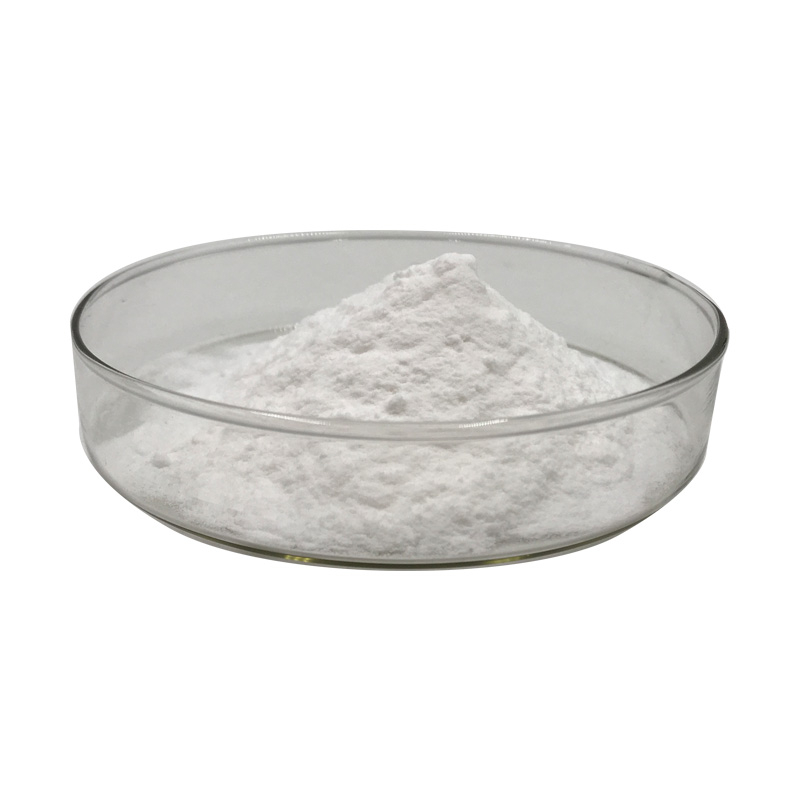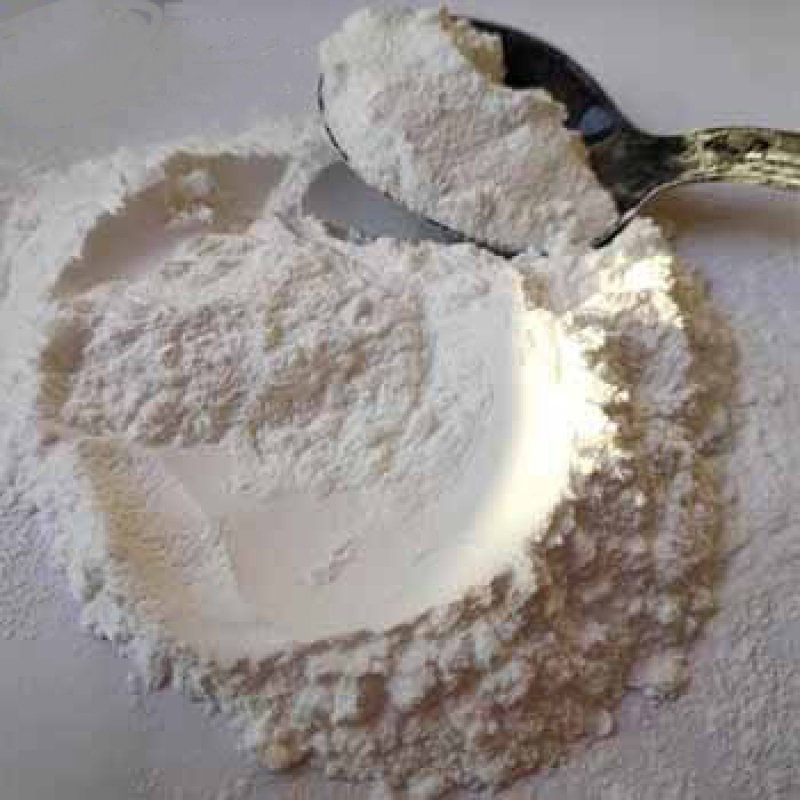Products Description of 6,7-Dimethoxy-1,2,3,4-tetrahydroisoquinoline hydrochloride CAS#2328-12-36,7-Dimethoxy-1,2,3,4-tetrahydroisoquinoline hydrochloride is a chemical with CAS number 2328-12-36,7-Dimethoxy-1,2,3,4-tetrahydroisoquinoline hydrochloride Chemical PropertiesMelting point 260-265 °C(lit.)storage temp. Keep in dark place,Sealed in dry,Room Temperaturesolubility soluble25mg/mL, clear, colorless (1N NaOH in methanol)form Shiny Flakes or Crystalline Powdercolor White to slightly beigeBRN 3634126InChIKeySHOWAGCIRTUYNA-UHFFFAOYSA-NCAS DataBase Ref
Contact Now
Products Description of 1,2,3,4-TETRAHYDROISOQUINOLINE CAS#91-21-4Tetrahydroisoquinoline (TIQ) is an organic compound with the chemical formula C9H11N. It is classified as a secondary amine and is obtained from isoquinoline by hydrogenation.
Contact Now
Products Description of 6-bromo-1,2,3,4-tetrahydroisoquinoline CAS#226942-29-66-bromo-1,2,3,4-tetrahydroisoquinoline is a solid chemical with a CAS number of 226942-29-6. 6-bromo-1,2,3,4-tetrahydroisoquinoline Chemical PropertiesBoiling point 283℃density 1.428Fp 125℃storage temp. under inert gas (nitrogen or Argon) at 2–8 °Cpka9.26±0.20(Predicted)form SolidCAS DataBase Reference226942-29-6Product Application of 6-bromo-1,2,3,4-tetrahydroisoquinoline CAS#226942-29-66-Bromo-1,2,3,4-tetrahydroisoquinoline is only used for scientific research.Fact
Contact Now
Products Description of Allylbenzene CAS#300-57-2Allylbenzene is an organic compound, a colorless liquid. Melting point -40℃, boiling point 156℃, flash point 33℃, relative density (20/4℃) 0.8920, refractive index 1.5131.
Contact Now
Products Description of Panthenol CAS#16485-10-2Provitamin B5 is a white crystalline hygroscopic powder.
Contact Now
Products Description of Flumethrin CAS#69770-45-2The industrial product is a clear brown liquid with a slight special odor. The specific density d is 1.013, and the vapor pressure is 1.33×10-8Pa (20°C). It is insoluble in water, but soluble in organic solvents such as methanol, acetone, and xylene.
Contact Now
MIBK CAS#108-10-1Chemical Properties:Dichloroethane is a colorless and transparent oily liquid with a chloroform-like odor and a sweet taste. It is very easy soluble in water, miscible with ethanol, chloroform and ether,it also can dissolve oil and grease, grease, paraffin. It is mainly used as a solvent.Application:Dichloroethane can be used as a standard reagent for chromatography; it is also used as a solvent for resins, rubber, cellulose acetate, cellulose esters, paints and polymers such as polystyrene; it is also used as a raw material for organic synthesis.
Contact Now
Products Description of Thiotriazolin CAS#357172-63-5Colorless liquidFactory and Equipment ShowFast delivery timeInventory 2-3 working days New production 7-10 working days
Contact Now
(2-hydroxytrimethylene)bis(trimethylammonium) dichloride Chemical PropertiesMelting point 256-257 °C (decomp)Factory and Equipment ShowFast delivery timeInventory 2-3 working days New production 7-10 working days
Contact Now
Products Description of Cellulose diacetate CAS#9035-69-2White powderCellulose diacetate Chemical PropertiesEPA Substance Registry SystemCellulose, diacetate (9035-69-2)Factory and Equipment ShowFast delivery timeInventory 2-3 working days New production 7-10 working days
Contact Now
Products Description of 2-Hydroxy-3-trifluoromethylpyridineCAS#22245-83-62-Hydroxy-3-trifluoromethylpyridine, as a pyridine derivative, plays an important intermediate role in the chemical industry, medical and pesticide fields, etc.2-Hydroxy-3-trifluoromethylpyridine Chemical PropertiesMelting point 150-153°CBoiling point 223.7±40.0 °C(Predicted)density 1.398±0.06 g/cm3(Predicted)storage temp. Inert atmosphere,Room Temperatureform powder to crystalpka9.67±0.10(Predicted)color White to Almost whiteInChIInChI=1S/C6H4F3NO/c7-6(8,9)4-2-1-3-10-5(4)11/h1-3H,(H,10,
Contact Now
Products Description of 1,3-Dioxan-2-one CAS#2453-03-4Used to synthesize polytrimethylene carbonate (PTMC)1,3-Dioxan-2-one Chemical PropertiesMelting point 45.0 to 49.0 °CBoiling point 135°C/4mmHg(lit.)density 1.200±0.06 g/cm3(Predicted)storage temp. under inert gas (nitrogen or Argon) at 2-8°Csolubility soluble in Methanolform powder to crystalcolor White to Almost whiteSafety InformationRisk Statements 22-36Safety Statements 24/25HS Code 29147000Factory and Equipment ShowFast delivery timeInventory 2-3 working days New production 7-10 wo
Contact Now
Products Description of 2-bromo-3-methylpropiophenone CAS#1451-83-8White powder2-bromo-3-methylpropiophenone Chemical PropertiesBoiling point 134-135 °C(Press: 8 Torr)density 1.357±0.06 g/cm3(Predicted)InChIInChI=1S/C10H11BrO/c1-7-4-3-5-9(6-7)10(12)8(2)11/h3-6,8H,1-2H3InChIKeyQGGNDYQVUDZPJB-UHFFFAOYSA-NSMILESC(C1=CC=CC(C)=C1)(=O)C(Br)C Factory and Equipment ShowFast delivery timeInventory 2-3 working days New production 7-10 working days
Contact Now
Products Description of Setipiprant CAS#866460-33-5White powder.Setipiprant Chemical PropertiesBoiling point 690.4±55.0 °C(Predicted)density 1.37±0.1 g/cm3(Predicted)storage temp. Store at -20°Csolubility DMSO:48.67(Max Conc. mg/mL);120.94(Max Conc. mM)DMF:50.0(Max Conc. mg/mL);124.25(Max Conc. mM)DMF:PBS (pH 7.2) (1:1):0.5(Max Conc. mg/mL);1.24(Max Conc. mM)Ethanol:3.0(Max Conc. mg/mL);7.45(Max Conc. mM)form A solidpka4.24±0.10(Predicted)Factory and Equipment ShowFast delivery timeInventory 2-3 working days New production 7-10 working days
Contact Now
Products Description of 3-(N-Methylpentylamino)propionic acid hydrochloride CAS#625120-81-2For organic synthesis3-(N-Methylpentylamino)propionic acid hydrochloride Chemical PropertiesMelting point 101-103°Cstorage temp. Sealed in dry,Room Temperaturesolubility Methanol (Slightly), Water (Slightly)form Solidcolor White to Off-WhiteStability:HygroscopicCAS DataBase Reference625120-81-2(CAS DataBase Reference)Factory and Equipment ShowFast delivery timeInventory 2-3 working days New production 7-10 working days
Contact Now
Products Description of Silver acetate CAS#563-63-3Silver acetate is an off-white solid powder at room temperature and pressure. It has average solubility in water. 1L of water can dissolve about 10.2g of silver acetate. It has good solubility in organic solvents such as ethanol, methanol and acetone.
Contact Now
Propyl acetate CAS# 109-60-4Chemical Properties:Propyl acetate, also known as propyl acetate, n-propyl acetate, or n-propyl acetate, is a colorless and clear liquid with a soft fruity aroma. Naturally found in strawberries, bananas, and tomatoes. Soluble in most organic solvents such as alcohols, ketones, esters, and oils, and slightly soluble in water.Quality Assurance:We maintain strict quality control to ensure our glacial acetic acid meets the highest purity standards, essential for critical industrial applications.Professional Sales Pitch:As a sales professional, I understand th
Contact Now
Products Description of Barium acetate CAS#543-80-6Barium acetate, chemical formula Ba(C2H3O2)2. Molecular weight 255.43. White crystal. Relative density 2.468. Easily weathered in the air. Toxic! Soluble in water and ethanol.
Contact Now
Ethyl acetate CAS# 141-78-6Chemical Properties:Ethyl acetate (structure shown above) is the most familiar ester to many chemistry students and possibly the ester with the widest range of uses. Esters are structurally derived from carboxylic acids by replacing the acidic hydrogen by an alkyl or aryl group. Ethyl acetate itself is a colourless liquid at room temperature with a pleasant "fruity" smell, b.p.
Contact Now
Products Description of NICARBAZINE CAS#330-95-0Nicarbazin is a complex of dinitrocarbamide and hydroxydimethylpyrimidine. It is a yellow or yellow-green powder; odorless, with a slight odor. This product is slightly soluble in dimethylformamide, insoluble in water, ethanol, ethyl acetate, chloroform, and ether.
Contact Now
Products Description of Nicarbazin CAS#330-95-0Nicarbazine is a complex of dinitrodiphenylurea and hydroxydimethylpyrimidine. It is a yellow or yellow-green powder; odorless, with a slight peculiar smell. This product is slightly soluble in dimethylformamide and insoluble in water, ethanol, ethyl acetate, chloroform and ether.
Contact Now
Products Description of BISMUTH SULFIDECAS#1345-07-9Bismuth sulfide is brown-yellow powder or crystal, with a specific gravity of 7.39. It decomposes at 685℃. It is insoluble in water and ethyl acetate, but soluble in nitric acid and hydrochloric acid.BISMUTH SULFIDE Chemical PropertiesMelting point 685°C (dec.)density 7.7 g/mL at 25 °C(lit.)solubility insoluble in H2O; soluble in acid solutionsform LumpSpecific Gravity7.7color GrayWater Solubility Insoluble in water.
Contact Now
Products Description of Disodium sulfide CAS#1313-82-2Sodium sulfide, also known as stinky alkali, stinky soda, or sulfide alkali, is an inorganic compound with the chemical formula Na2S.
Contact Now
potassium methylsilanetriolate Chemical PropertiesBoiling point 112℃[at 101 325 Pa]density 1.388[at 20℃]Specific Gravity1.29Hydrolytic Sensitivity0: forms stable aqueous solutionsLogP0.780 (est)EPA Substance Registry SystemSilanetriol, methyl-, potassium salt (31795-24-1)Product Application of Potassium methyl siliconate CAS#31795-24-1Methylsilanetriol potassium salt is mainly used as a surface treatment agent and catalyst. It can be used to improve the wettability, water resistance and wear resistance of materials.
Contact Now
































